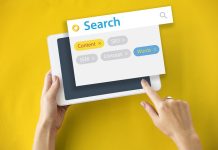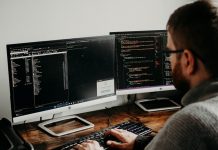Technology has revolutionized nearly every aspect of our lives, and education is no exception. With educators and administrators striving to make learning more engaging, accessible, and effective, Learning Management Systems (LMS) have risen to the forefront as a crucial tool in modern education. From managing coursework to facilitating collaboration, a well-designed LMS, like Vextur Elearn Moodle, can transform the way teachers teach and students learn.
But what exactly does an LMS bring to the table, and why should schools or institutions consider implementing one? Let’s unpack it.
What Is a Learning Management System?
A Learning Management System (LMS) is software that helps plan, deliver, and manage learning content. Think of it as a virtual classroom where everything—assignments, quizzes, grading, and collaboration—happens in one organized space. For educators, it streamlines administrative tasks. For students, it creates an environment that’s flexible and personalized.
Platforms like Vextur Elearn Moodle have become particularly popular because of their adaptability. From K-12 schools to universities and corporate training sessions, these systems cater to a wide range of educational needs.
Benefits of Implementing an LMS in Modern Education
An LMS is more than just a digital storage unit for coursework—it’s a dynamic teaching and learning hub. Here are some key advantages an LMS can offer:
1) Centralized Access to Learning Materials
Gone are the days of juggling piles of printed worksheets or searching frantically for lost assignments. With an LMS, all learning materials, from lecture slides to reference links, are stored in one easily accessible platform.
For instance, Vextur Elearn Moodle allows educators to organize courses intuitively, ensuring students can quickly locate materials anytime, anywhere—whether they’re studying during a lunch break or brushing up on concepts at midnight.
2) Flexibility in Learning
With an LMS, education moves beyond the four walls of a classroom. Students can access coursework and resources on their own schedule, making it easier for those who need to balance learning with work, caregiving, or other commitments.
It’s also a lifesaver for educators. Imagine being able to upload a lesson once and have it available for every single class or adjust due dates for specific students without having to send dozens of emails. Vextur Elearn Moodle’s user-friendly interface makes flexibility a reality—not an afterthought.
3) Personalized Learning
We’ve all heard it before—”One size doesn’t fit all.” That’s especially true in education. Students learn at different speeds, and they have unique strengths and challenges. A robust LMS can help cater to individual needs.
Many platforms, including Vextur Elearn Moodle, incorporate tools for personalization, such as adaptive assessments, individualized progress tracking, and recommendations for additional resources based on performance metrics. This personal touch makes a big difference, especially for struggling students.
4) Streamlined Communication
How often do students miss out on important updates simply because they didn’t check a bulletin board or hear an in-class announcement? With an LMS, communication becomes seamless. Educators can send out assignments, reminders, and updates in real-time.
For example, Vextur Elearn Moodle includes integrated messaging and notifications, so both students and teachers stay on track without being bogged down by unnecessary back-and-forth emailing.
5) Data-Driven Insights for Better Decision-Making
It’s not just about teaching—it’s also about improving how you teach. An LMS can track data like student participation, assignment completion rates, and quiz scores, providing valuable insights into what’s working and what isn’t.
Educators can use this data to refine lessons, prioritize topics students are struggling with, or identify at-risk learners before they fall behind. Platforms like Vextur Elearn Moodle offer dashboards and analytics to help educators visualize this data clearly.
6) Cost Efficiency
Is printing mountains of paper really sustainable—for your budget or the planet? An LMS eliminates the need for printed materials, saving schools and institutions significant costs in the long run. Plus, integrating tools like auto-grading can minimize hours spent on manual tasks, freeing up educators to focus on what really matters—teaching and mentoring.
Best Practices for Making the Most of Your LMS
Implementing an LMS in your institution is a great step, but using it effectively takes thoughtful planning. Here’s how to make the most of it:
- Train the Team: Provide thorough training for both educators and students to familiarize them with the platform. This ensures a smooth transition and avoids frustration.
- Keep It Engaging: Use multimedia tools like videos, infographics, and interactive quizzes to make learning more engaging. Static text walls won’t do the trick!
- Set Clear Expectations: Be clear about deadlines, grading policies, and how the LMS will be used. Consistency is key to reducing confusion.
- Seek Feedback: Regularly ask for feedback from both students and staff. Knowing what works and what doesn’t will help you improve the implementation process.
Transforming the Future of Education
Learning Management Systems like Vextur Elearn Moodle are not just tools—they are catalysts for change. They simplify tasks, enhance collaboration, and provide students with a truly modern learning experience. By breaking down geographical and logistical barriers, these systems ensure that education remains accessible, equitable, and effective.
For educators and administrators, adopting an LMS isn’t just a tech upgrade—it’s a step toward shaping the future of teaching. Considering implementing one in your institution? Take a closer look at how Vextur Elearn Moodle can make a difference in your educational programs.










































